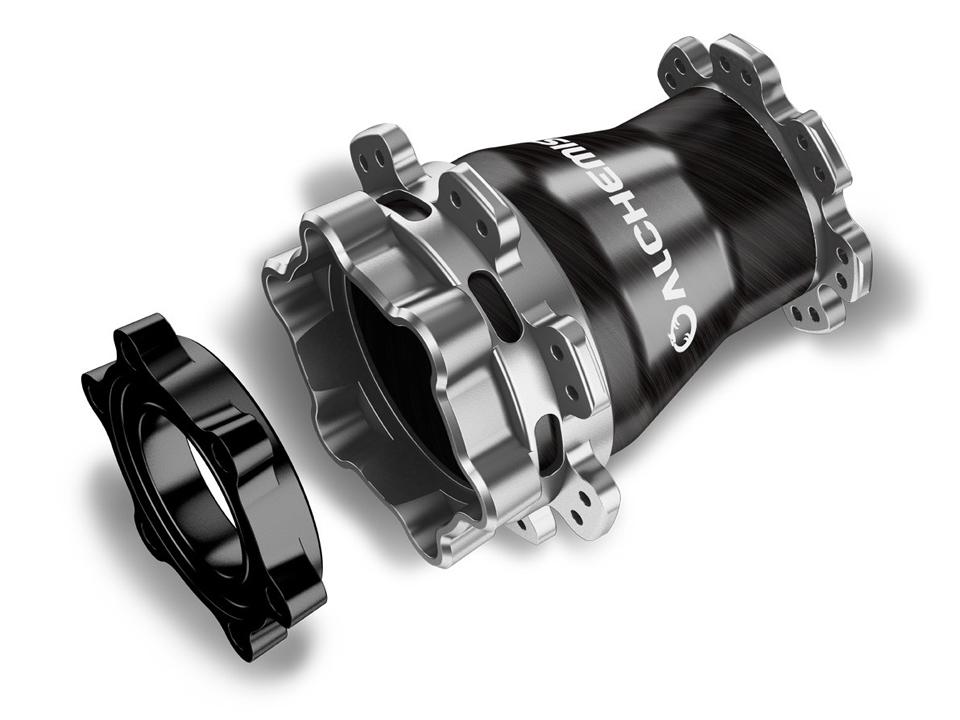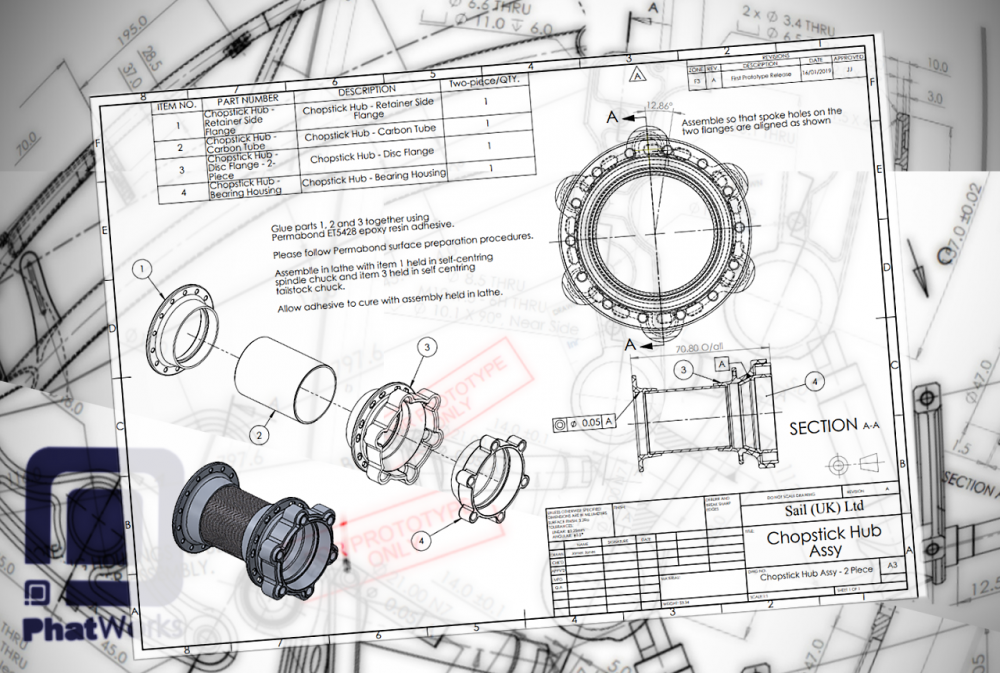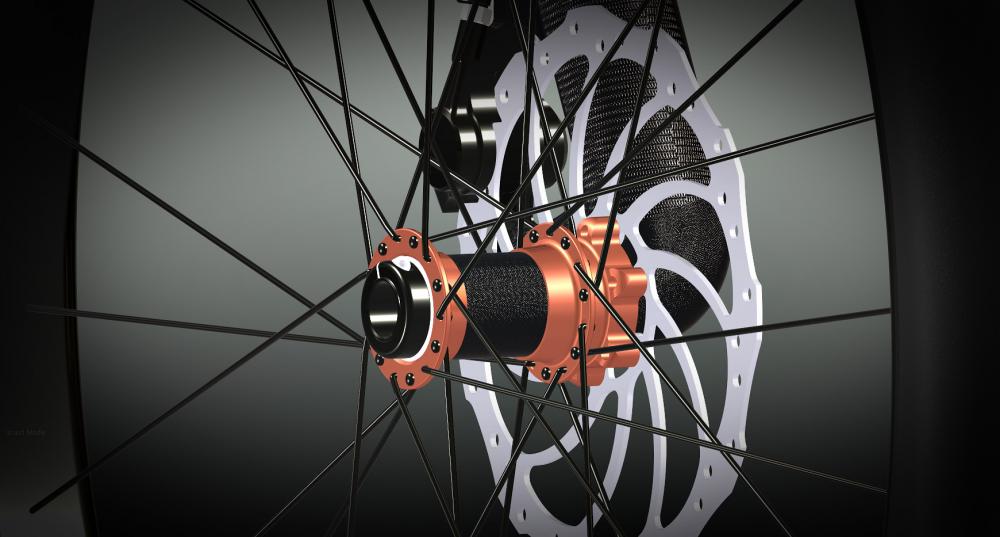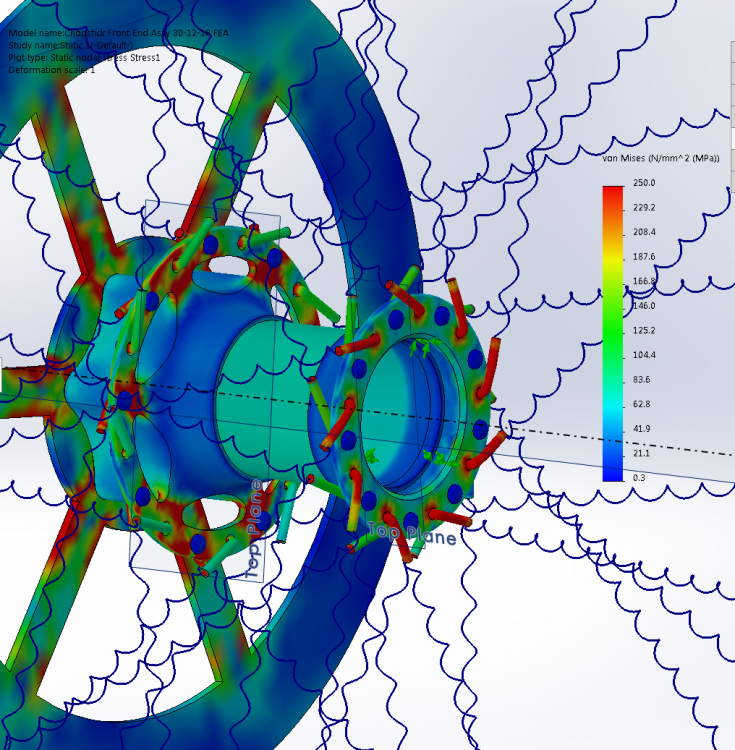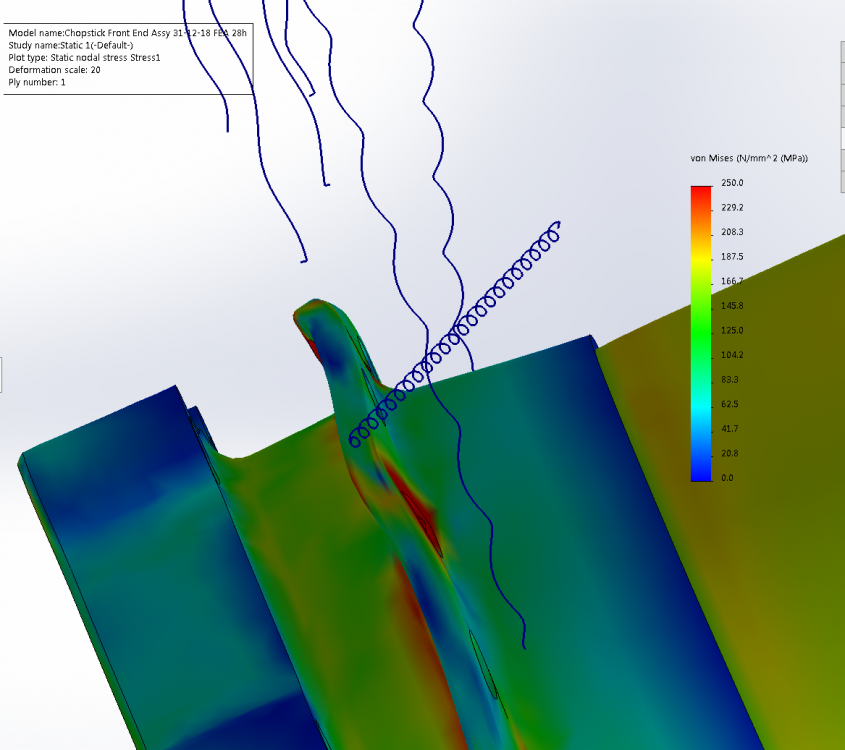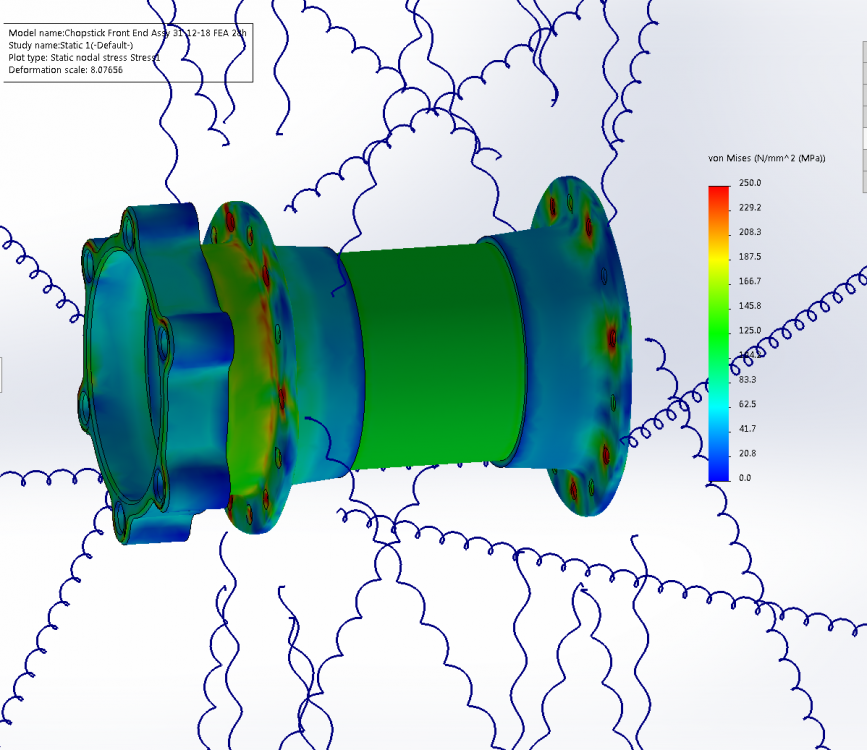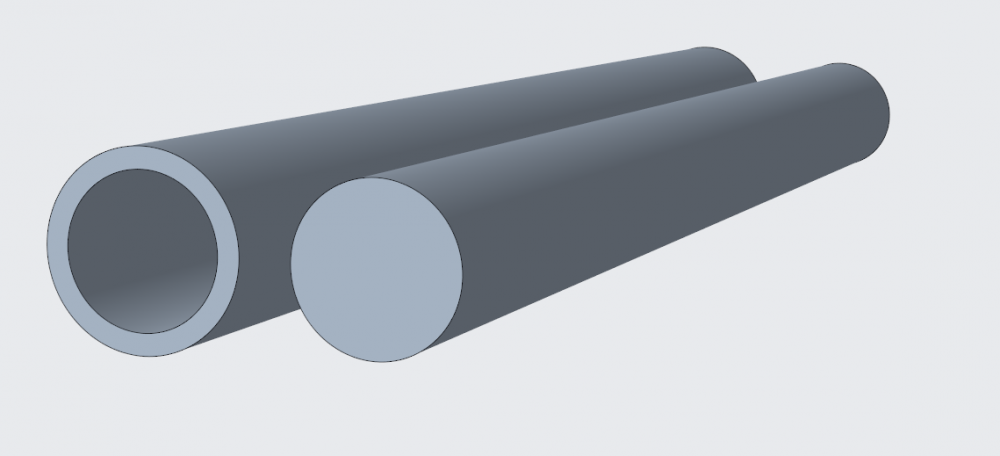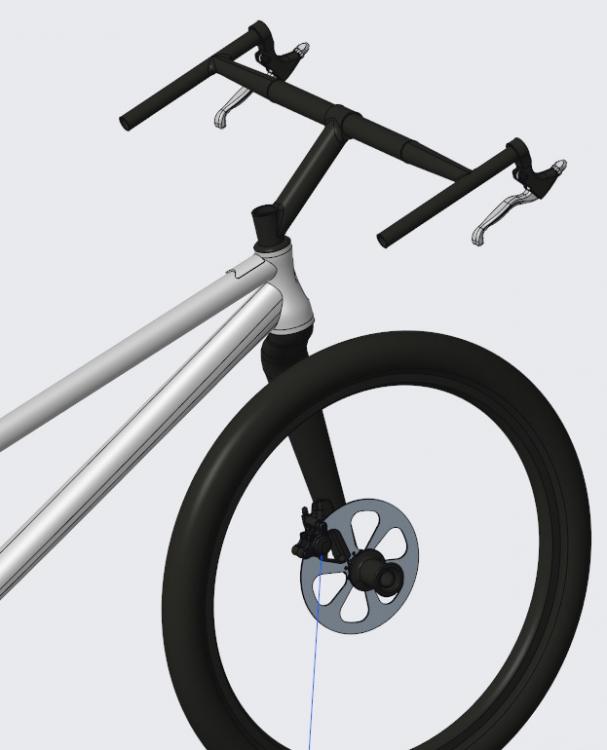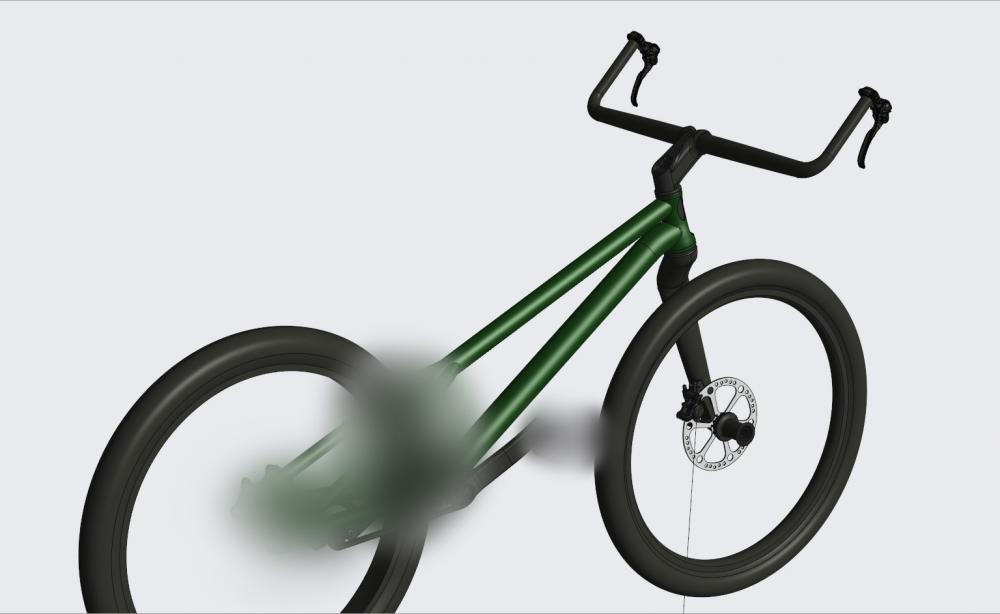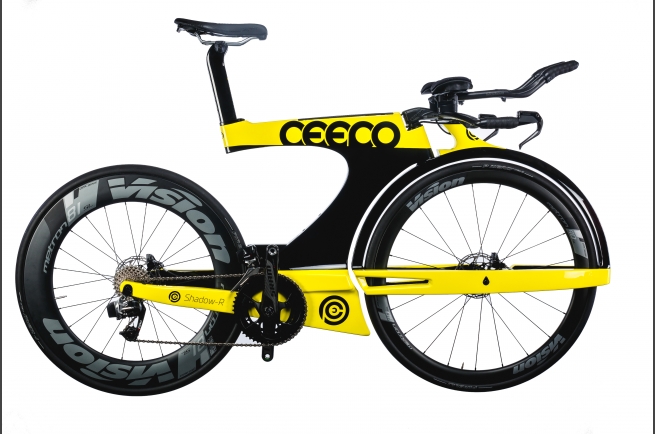-
Posts
5443 -
Joined
-
Last visited
-
Days Won
2
Phatmike last won the day on May 12 2022
Phatmike had the most liked content!
About Phatmike
- Birthday 05/31/1989
Contact Methods
-
MSN
Michael.Singleton@Trials-Forum.co.uk
-
Website URL
http://www.PHATWORKS.co.uk
-
Skype
michaelsingleton89
Previous Fields
-
County (UK Only)
Worcestershire
-
Real Name
Michael Singleton
-
Bike Ridden
Stock
-
Country
United Kingdom
Profile Information
-
Gender
Male
-
Location
Malvern/Loughborough
Recent Profile Visitors
16302 profile views
Phatmike's Achievements

Too Much Spare Time (7/9)
34
Reputation
-
Still happily running the Ritcheys here too!
-

Single-sided front fork - hub mounting suggestions etc
Phatmike replied to Phatmike's topic in Trials Chat
Full disclosure; we didn't invent that! Thanks Alchemist. The spline comes from the material around the rotor bolt holes and good tolerances. It's all designed to be well fitting and accurate. James, our engineer did the FEA and came up with the slotted hole idea to allow the spokes in with the smaller & lighter flanges. -

Single-sided front fork - hub mounting suggestions etc
Phatmike replied to Phatmike's topic in Trials Chat
Yeah, just wanna let you guys know that we're all on the same page there. We've been as thorough as we can, looking at the worst case for/aft bending, twisting, side loading cases, even combining them together for a high-speed fat guy doing a 180 downgap to hook kinda thing. We're gonna find out for real when it's built - being currently conservatively overengineered for strength and stiffness, and then peel back the wall thickness of the carbon following the physical testing. Have gone with the QR-in-the-hub idea. We've saved weight elsewhere, and so the total hub weight still sits in at 80g. Parts (1), (2) and (3) are bonded together. Part 4 houses the LH bearing and rotor and stays on the axle, separating from (1)(2)(3) when removing the wheel. -

Single-sided front fork - hub mounting suggestions etc
Phatmike replied to Phatmike's topic in Trials Chat
Thanks guys, I think Flipp's hit the nail on the head - We just want to make parts that keep up with the fun of riding. Trials has always been as much about the bike to me as the riding itself. I agree that such a low weight penalty (we're working on it at the moment, and it's looking at less than a 10g increase), is really small compared to the hassle and potential wear on the forks (yes molded in threaded inserts) of removing the caliper each time. Yes the forks + disk combo will be slightly heavier than a rim brake with CF forks, but not by much, and even then only eclipsed by the lightest of competition setups. I couldn't stand to run a front rim brake though, it's frustrating when I'm with guys that have to stop and walk their bike when going down a hill, or just make a shit ton of noise, plus I much prefer the modulated feel of the disk on the front. As it stands though, there are quite a few improvements coming in the not-too-distant that will see the total fork + brake weight come well below the current CF fork + rim brake setup, that could interest the comp guys more too. I do like the Ocho fork, for lots of reasons! That mounting hardware looks smart, very bulky and heavy compared to what we have in mind with the hub though. -
Hey guys, We've got split opinions in the office today. After quite a lot of work on the front hub for the Chopstick we have got the weight down pretty far. The (disk) hub is now about as light as the lightest non-disk hubs, which we've been able to achieve by a lot of FEA, a nifty bit of problem solving to allow the flanges to be kept small (whilst still offering equal dish and spoke lengths both sides), and the fact the axle weight is in the fork itself: About 80g including all the mounting hardware. At the moment we're looking to build a 450g fork, suitable for 24" and 26", with a +20mm post-mount adapter. Our data is showing that we can go significantly lighter than that though, so we'll be doing some real-world testing and testing in the lab too, whilst tooling for a 20" model. The issue at hand is about removing the wheel. As it is, you'd need to un-bolt the caliper to slide the wheel off the axle. We have a QR design to allow the wheel to slide off whilst keeping the rotor in place - it'll add about 20g to the total weight. My vote is to have that feature and accept the pretty minor weight penalty for convenience, but there is the argument that some would prefer to save every gram they can and/or wouldn't take the front wheel off enough to warrant it. What do you reckon?
-
What do you think about the developments in geometries? A 71.5ish head angle used to be the norm across the board; and still is on most static-oriented bikes, whereas the streetier side of things is steadily pulling steeper without finding an equilibrium yet, like we seem to have done with the rise in bb height in the mid 00's. Maybe there's avenues to explore by going steeper still in both ends of the discipline. 3 degrees will make a huge difference in term of reach-adjusted wheelbase. With the addition of shorter back ends and lower offset forks, it will affect a lot of aspects of riding and highlight how a PX Zebdi is so different from a Hex, despite their similar wheelbase (to be corrected? What did the Zebdi's measure in at?). Given that, and approaching my build with a slightly more trialsy angle (meaning a longer stem), I've actually settled on a wheelbase for the Union not too dissimilar from the Hex, with some tweaks to mine and Andy P's current frames (+ JJ's shorter version and Martin Pretorious' longer version) to make it the all-rounder it's shaping up to be. Luckily these tweaks suit a streetier build as well too, and we've had some great input there. As someone said in another topic about Jeff Anderson(?)'s negative rake (backwards) forks, to shorten the wheelbase with the same reach it seems there's more to consider.
-
Haha, I think the engineers are still skeptical - even I am! We'll really find out when we make them and can run analyses and destruction testing vs other forks. This is a good watch - skip to 5:00 minutes in for the real science.
-
Gotcha, I get what you mean now - was imagining someone putting a stick through your spokes, and then doing a pressup Yeah, you're quite right. The large diameter of the axle is 32mm. We've nearly finished the custom hub to match - Alex Dark has been working on that. Aye, a pizza's a good analogy. A muffin would be more accurate.
-
Hey! Yeah you're right on with the PhatWorks Union 26 Frames - I wanted something exactly like you're suggesting and couldn't find it. Been working making other bikes for a few years so starting in March 2017, just designed my own. It started out very simple but but now we have something that's quite advanced. My 1065, 388, +15, 73 does feel a little too long, probably because I steepened the head angle without shortening the wheelbase. I'll be announcing the finalised geo soon, with a 380 back end, a smidge higher bb, shorter front end, and a some really nifty new features.
-
Flipp, you're insights are spot on - especially the bit about innovation for its own sake; it's fun! Like you say, some of the parts - cogs etc, are gonna have some real benefit when we get them working. Same with the forks, in theory they'll be the lightest on the market so, higher sidehops. Without giving too much away, strength hasn't been a design constraint for us, we're really confident they're strong enough. Our design considerations basically boil down to a stiffness to weight ratio, and we've got a design that we're happy to proceed with and then can tweak our layups in the real world and get off the pc. Like I said you're right on the money with the bars. I'd say that sidehops have been absolutely fine with zero discomfort at all, and no hitting the crossbar like you mentioned. The only times I've found a limitation is when you've got your front wheel a lot higher than the back (static swaps, hooks etc) and you're right over the front. Even then it's really minor and you can adjust your posture subtly and easily to get around it. Getting the angle set right is the key. Everything else I literally jumped on and rode it. Hooks, gaps to front, taps, gaps, everything else yeah! I'm trying not to be biased and to genuinely critique what I'm doing. Really looking forward to other guys trying them and sharing findings. I'm not actively working on any drive train stuff for now, as of yet I don't think I've got much to give above what I know some other people are doing. I'm definitely putting my dream spec-list together for a rear hub though.
-
Al. Put bluntly - yeah we really have considered that. It is a funny one to get your head around, and we've done quite a lot of work to prove it as far as we can mathematically & using FEA - even as far as calculating the load on each single sheet of carbon. For sure we will really find out when we build them. If we're wrong, we'll learn a hell of a lot more, but so far, it works. I really like how they look too. Sometimes things aren't quite as intutitive as they seem, let me give you a really simple example about something that is really not obvious, but true when you get to the nitty gritty: In the image below, lets say these are two steel axles. They're the same material, lets say a decent quality, stainless steel, both the same length, subject to the same force - in bending. The only difference between them is one is a solid, 12mm rod. The other - just a slightly larger 14mm dia, is a flimsy 1.54mm wall thickness, right? The the solid bar, what w'being solid, weighs 88.4g. The thin-walled one, what wit great big ole down't middle is not far off half (53.2%) of the weight. Makes sense - there's a hole lot less (waay!) material there. Yet, when you put a force on these two, they undergo the same stress, so in effect the same strength. What's more, the one that's half the weight is actually 16.6% stiffer. It doesn't seem intuitively right that something half the weight and so similar, could be stiffer, but as you know - it's where you put your meat that counts, not how much meat you have. Kinda all we're doing with a lot of things we're working on - just putting the right stuff in the right place. Stuff like this, when applied in other areas, can really lead to parts that are stiffer, stronger, lighter, and with less material and processing; cheaper too. Of course there's a lot more to it than a simple bit of bent pipe, but that's really all a fork (or chopstick) is. The handlebars - yeah you're probably right there's not enough length on that model - that was mainly to visualise it. I'm close to getting something ready to produce for more folk to have a go with. Thanks for the thought. Swoofty - Idea came from finding the benefits of an outwards hand rotation during yoga practise and seeing if they'll cross over to trials. It leads to a more open chest and heart, better and stronger posture and better breathing. I've found a feeling of more control and physiologically feeling more confident with my hands (ergo arms, chest, shoulders and back) in that posture.
-
They'll probably have it ready in a few weeks aye. Tensioner.. Yeah - taking bloody ages. Staff issues
-
AndyT, you're the first person wanting to try a set! From the few rides I've had so far, I wouldn't say it uses the biceps or even any muscles in the arms differently or particularly more than normal bars. Having not ridden them hugely, and being well out of practise anyways I'm wanting to get more riders' feedback on them. The initial design was for a longer stem, and having them coming back down from the cross bar, and a newer design has them bent up from the same position on my bike now. Planning to get some of these versions made up soon for more people to try out. Much of this kinda stuff will be short runs - like the first 5 frames we did. Mark, on the surface of it, it doesn't sound like Jeff sounds like a fetish and I can see how having the front wheel further back makes sense for some moves. I'm curious to give it a try myself just for the experience (still talking backwards forks?). As we're finding out with all this, there's so much left to explore, which is really part of the fun. It could well be that shorter (or even negative rake) does make sense, but we don't really know until there's some evidence that it's more fun to ride or higher sidehops. Aye, you guys have hit the nail on the head with the Kicker Sprocket - if you can run two on your splines/threads, sweet. However, there's still a limit of 12, maybe 11 teeth, whereas hitting pace with 18:9 on a stock would be pretty reasonable! It would make a big difference to mods too. As Flipp said, it largely comes down to the tensioner, which I think we've nearly solved. I did see an awesome prototype hub last week, which opens up a few other doors for drivetrains that I wanna try! One thing at a time hey.. You guys should see the pedals we're working on. We actually made these prototypes in 4 different geos. Only mine and Andy Pontings are the same, and there's one more in Italy (I think.. very long story) that's getting built up now. We'll have more announcements about all this soon, and I can't freaking wait. Just spend more time designing the stuff than talking about it!
-
Agreed on the fork-offset there Marky, more just a curiosity than a prediction. Haven't seen anyone give it a try, so we really don't know the answer. That larger tube diameter, in the right place - thing is a big thing though. It's fascinating how much stiffer a tube gets when you make it even just a little bit bigger. A benefit of Lefties is those roller needle bearings that they run on rather than the tight bushes needed on regular forks. Tbf I've never ridden a set, but from the theory and reading a lot of riders discuss them (I'm a fan..), it does seem to add up. It is interesting they've never made (publically) a long-travel one, so I don't know what constraint has limited that.. The Chopstick certainly doesn't make intuitive sense either. The guy who's been assisting with the engineering on it had the same feeling at the start. It was only when I pushed him to carry on with it that he found it did indeed make a lot of sense! Along with all of our theoretical work, which I will be happy to simplify and post in due course, and real-world testing on the bike, we'll definitely be sharing the results of destructive testing in the machines. If we find we've completely missed the mark, then awesome we get to see some forks break. Al.. it's trials, it's never gonna be big. The truth is, we're all a funny sort and really love it. I get a bit of a kick out off this kind of work, and really believe these parts are going to be better. If it helps the next Vincent Hermance or Danny Macaskill do a move in a video that they might not have been able to nail with flexier or heavier part, or if someone just really likes riding a certain frame or whatever, then sweet. You're right though, a LOT of theory and design work, so far its just the frames that are getting hammered, but we're gearing up to start work on more. Finance wise.. I'm just being really careful with my outlays, hence all this background work. Going to be needing support and faith from the riders and shops though.
-
Interestingly, fork / axle offset has been getting less and less. A 71.5 degree headtube angle with a fork of 40mm offset, gives the same trail (not really that much of a concern in trials, but a funky observation nonetheless) as a 74 degree h.t angle with a more modern 25mm offset fork. It would be cool to see how a zero-degree offset fork feels - that or even a negative offset fork is where the current trend is pointing, but I'm not gonna bet the cost of a mold tool on that one! Likewise for the lephtie/rightie.. let's do this one first - if we find that it's awesome not having a leg on one side then maybe we can justify a symetrical mold tool, but not just yet. Alternativelty we go down the Ceeco route and get rid of both legs!



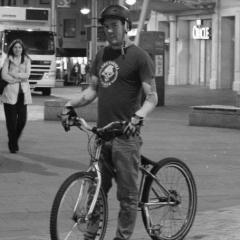

.thumb.png.fd5a20f6cd09ee01f6d99a6b99fb7a87.png)
